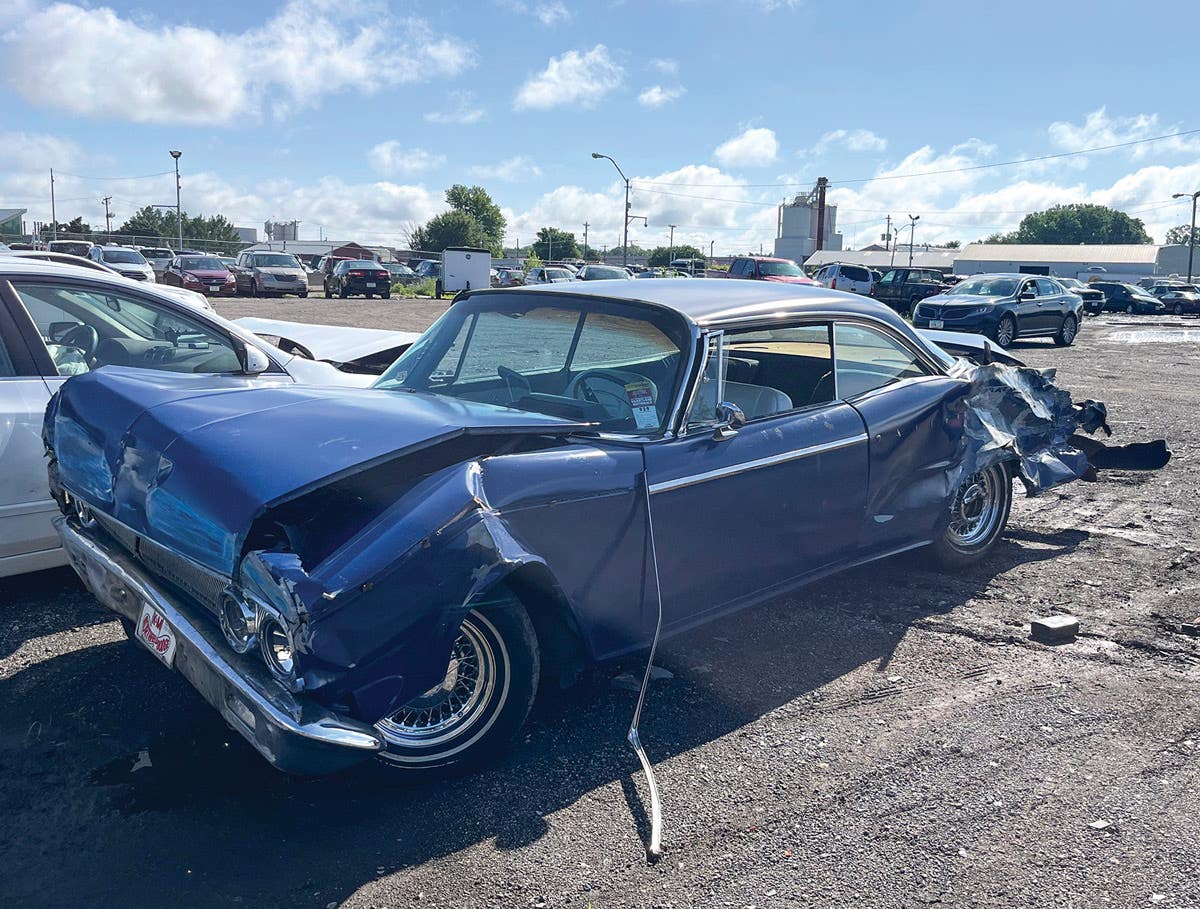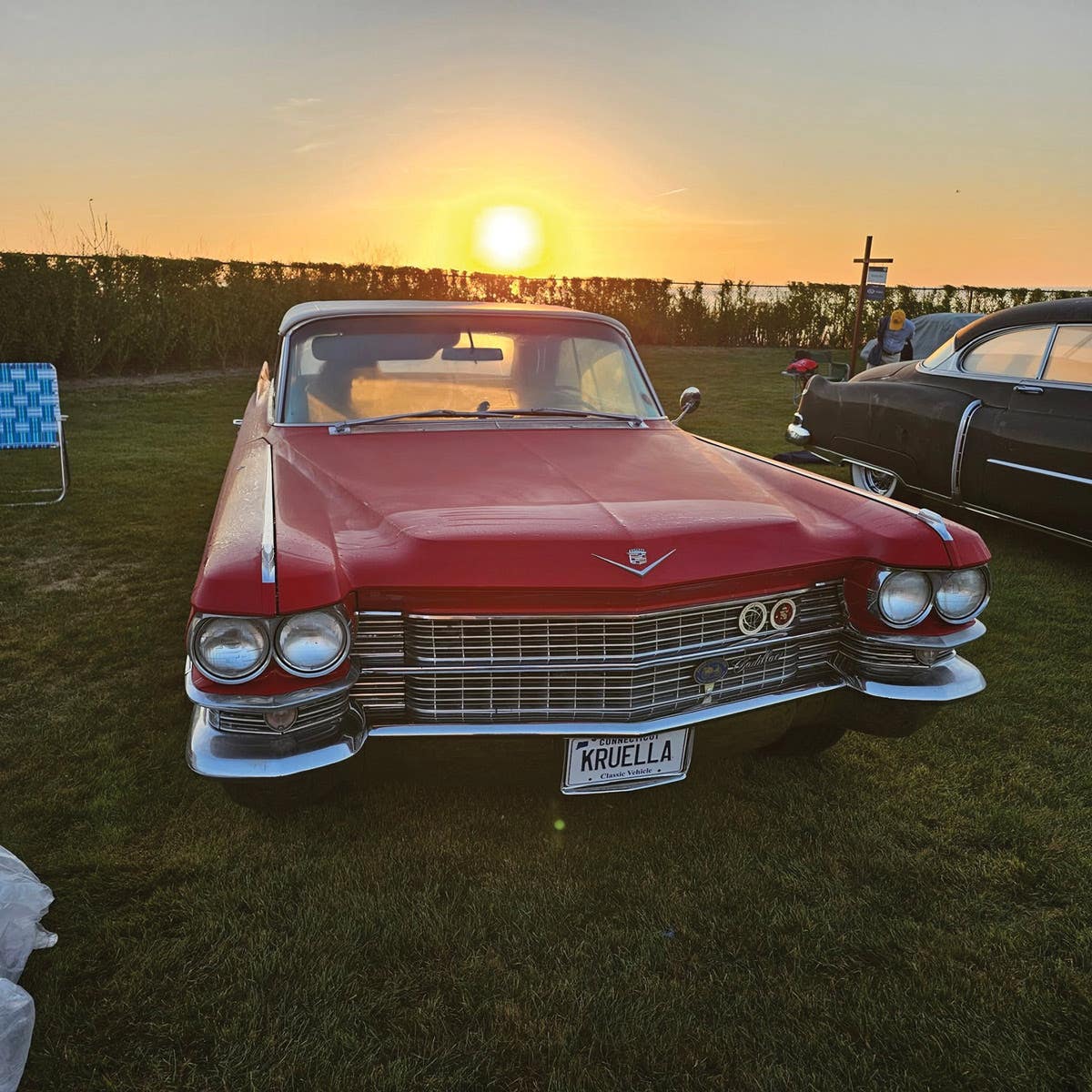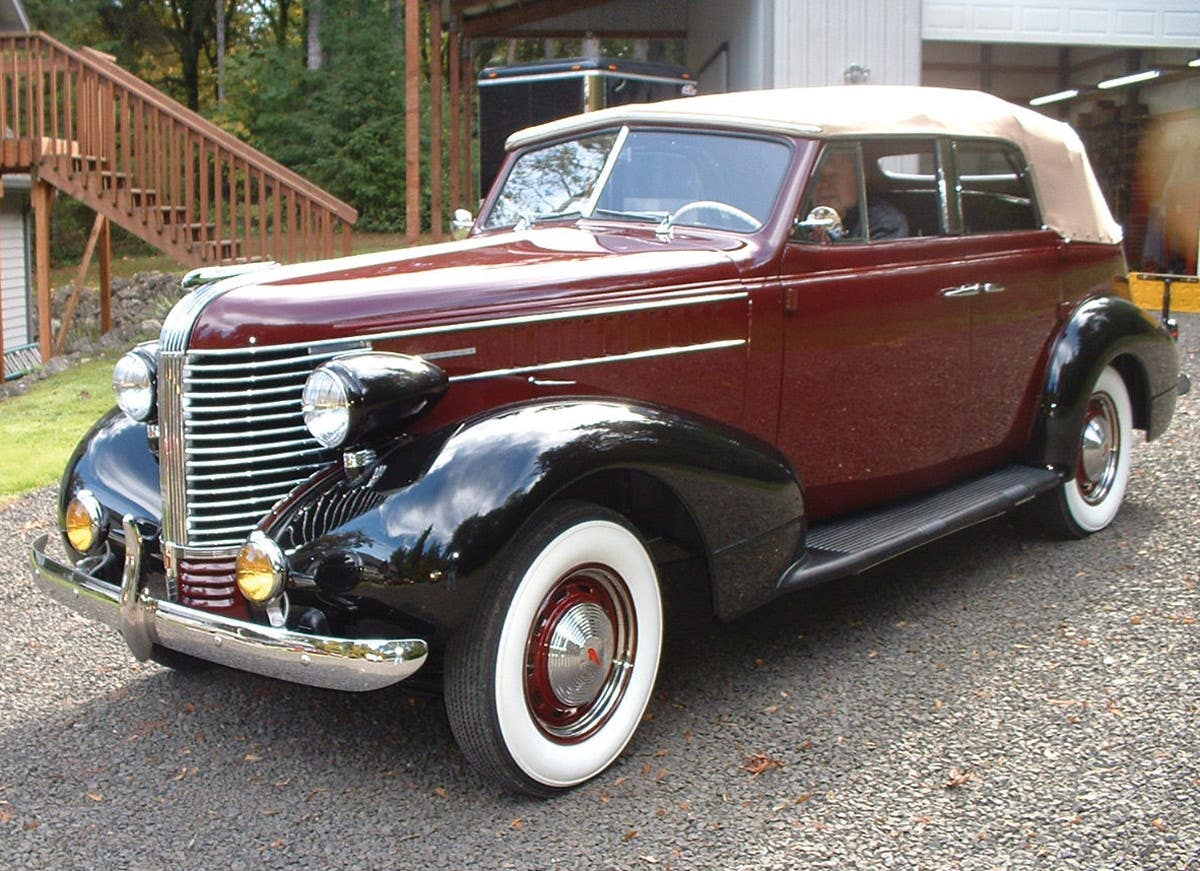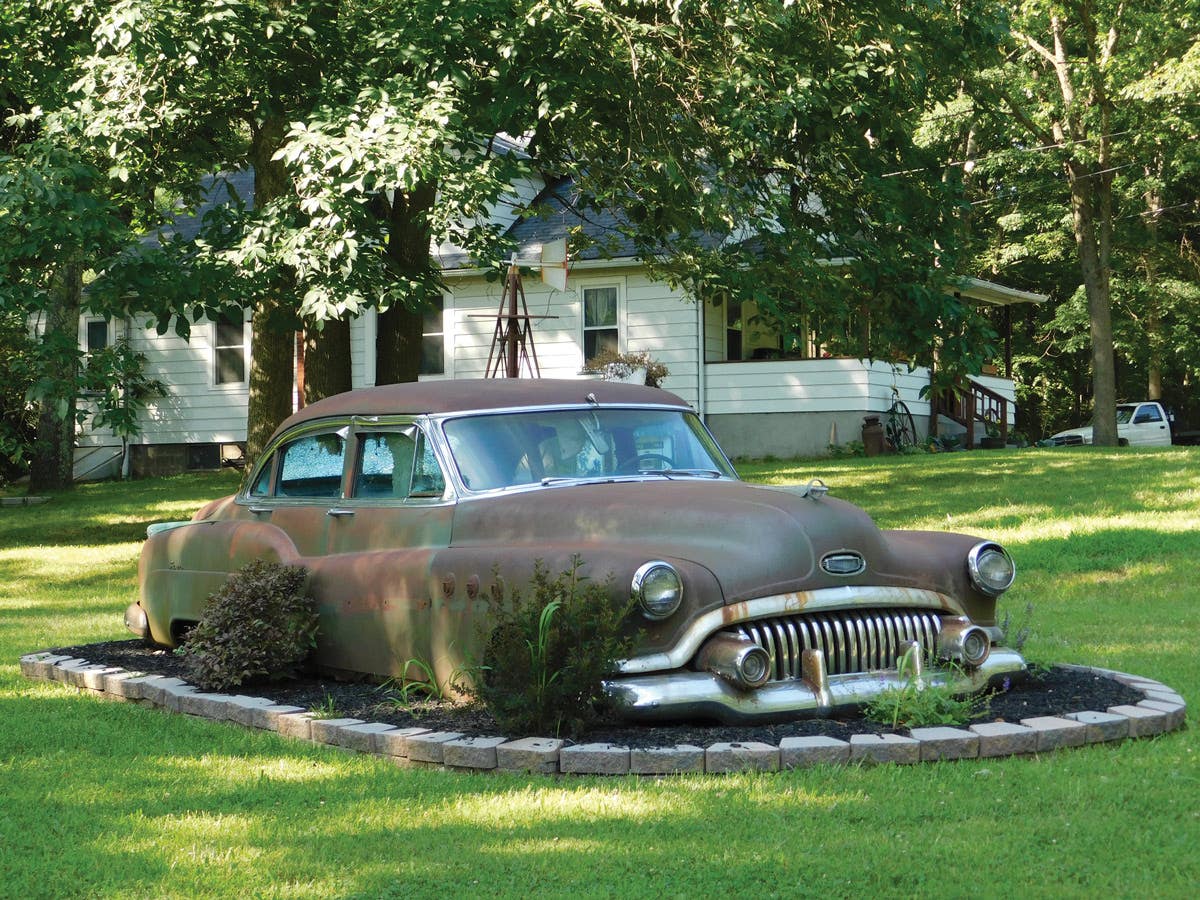Car of the Week: 1974 Plymouth Road Runner
Steve Wexel’s spectacularly original Silver Frost example has just 7,200 miles on the clock and might be the most unmolested 1974 Plymouth Road Runner on the globe.
By Brian Earnest
As an unabashed fan of 1974 Plymouth Road Runners, Steve Wexel is pretty sure he is enjoying the best of both worlds. On the one hand, the Delray Beach, Fla., resident gets to drive his favorite machine almost every day — his rebuilt blue ’74 is his regular transportation.
And Wexel has the other extreme covered, too. His spectacularly original Silver Frost example has just 7,200 miles on the clock and might be the most unmolested ’74 Road Runner on the globe. He rarely drives his low-mileage Plymouth because of its amazing past and unrivaled originality, but he doesn’t mind. The car has turned out to be more than he bargained for and he’s glad to be its caretaker.
“I had never seen the car in person until [it arrived], I really wasn’t expecting anything special,” admitted Wexel. “I knew about the car and I wasn’t worried about it, but I was really, really surprised about how it looked when I saw it in the sun for the first time. It was actually much better than I was anticipating.
“When I bought the car… I had never been to a car show, and didn’t really care much about going to a show and looking at other cars. I was just thinking this was my chance at a Road Runner. But by the time I got it here and looked at it, I knew what I had and knew I shouldn’t be driving it.”
Wexel said he found the car while searching on eBay for parts for his other Road Runner, which he has been driving regularly since 2006. At the time he said he didn’t have the money to buy the gray car, so he had a couple of friends buy it temporarily “as an investment” before he set up a corporation — Road Runner Boynton — to be the car’s legal owner in 2009. Since then, the car has gone on to earn Bloomington Gold Certified Fingerprint Survivor status.
It’s doubtful the northern Indiana man who owned the car originally had any such intentions for the car when he bought it new in 1974 for his son. The car’s title was soon transferred to the 19-year-old, but instead of doing what most teens would do with such a fun, sporty machine — take it out and pound on it — the young man simply parked it.
The car was titled in Michigan in 1980, but from that point on, accumulated only 5,700 miles on the odometer before it was eventually put up for sale. Wexel later talked to the son about the car, but never asked him why he was parting with it after preserving it so faithfully for so many years.
“My viewpoint on that … with these things, No. 1 there is either a health issue involved, or No. 2 he had money, and then he didn’t have money,” Wexel mused. “Put yourself in that position. If you wanted a new car and kept it for 35 years, why would you sell it? I can’t even imagine me selling it, and I’ve only been showing it for 3 1/2 years. It had to be a money issue, and I didn’t want to ask him because it had to be a sore subject.”
Wexel was able to verify that the car was indeed original and that the few minor paint touch-ups that had been done were actually performed at the factory before he ever took ownership.
“Actually, he said they offered to repaint the car for him,” Wexel said. “They ordered the car because they didn’t want to buy one off the lot. … It had some chips in the back edge of the header panel, and they touched it up and it looks bad, but he never had them repaint it. It was the best decision he ever made … because it wouldn’t be an original survivor car without original factory paint.”
The previous owner had painted the underside of the Road Runner black — “mufflers and everything,” Wexel said — but hadn’t touched anything else. Under the hood is the car’s original 318-cid V-8 and floor-shifted automatic transmission. The build sheet shows it came with a Deluxe Interior featuring white seats and door panels with a black dash and carpeting, AM/FM radio and no air conditioning.
Wexel said the young owner never really put the car in long-term storage, it was more a case of just not driving it very often, for reasons unknown.
“I really don’t know his intention. He never drove it in the rain or the snow, so that means he was intent on keeping it a long time,” Wexel said. “I don’t know if it was going to be his show car. I doubt it. When you’re 19 you probably aren’t thinking about shows.
“He just plain wanted to keep the car forever … My first car was a 1974 Road Runner, and I would have liked to do that with my car, but unfortunately it was my everyday car. It was my only car!”
Every car lover has a favorite make and model, and Wexel’s was the ’74 Road Runner, right from the beginning. He was the opposite of the young owner of the gray car, however. He used his Plymouth for everything and piled up the miles on it — and on many other Mopars since then. “The real reason I like the Road Runner is that when I got my first one new, I lived in Michigan, and I’m a fisherman,” he said. “We’d throw a canoe on the roof and drive across the fields and look for ponds … Now I fish out in the ocean in a canoe — the same canoe, actually — and I still put my canoe on the roof of the car and put everything in the trunk and it all fits. The trunk is huge. People say you can fit three bodies, four bodies in there… That’s why I like the car, that’s why I keep driving it. It has nothing to do with being a classic car or anything. They’re just such great cars to drive.”
Plymouth’s popular, budget-priced muscle machine had won over many fans by the time the second generation of the car came to a close with the 1974 model year. That would be the final season the Road Runners were based on the Satellite/Belvedere “B”-bodies. The following year, the 1975 Road Runner would utilize the Fury platform.
With a long nose and aerodynamic profile, the Road Runner still looked the part of a muscle car in 1974, although the monster mills were long gone, joining a long list of casualties resulting from tougher stances by insurance companies and the gas crisis that gripped the early part of the decade. You could still get a de-tuned 400 or 440 under the hood of your Road Runner in ’74, but the base power plant was a 318 rated at a modest 170 hp. A three-speed manual transmission was standard, but the option list included a four-speed manual and three-speed TorqueFlite automatic.
Unlike GM’s body-on-frame mid-sized cars at the time, the Plymouth B-bodies feature unit-body construction and you could get your Road Runner, Satellite or GTX in a wide range of personalities and price ranges. The Road Runner was part of the Satellite series and included a few extras that the base Satellite did not, including a heavy-duty suspension and brakes, beefier sway bar, “performance” hood, Rally gauges, white-letter tires, floor shifter and dual exhausts. A base model would set you back $3,545.
Wexel’s Road Runner was one of 11,555 produced for the model year. It now has a reproduction battery and correct set of Polyglas tires, but is otherwise almost completely original. “I think it’s even got the original spark plugs in it, and I haven’t done anything with the engine seals,” he said.
Silver Frost was a relatively uncommon paint choice at the time, and it is set off by red stripes that start behind the headlamps and wrap over the roof. Wexel admits he worries about the condition of those stripes as much as anything on the car.
“I don’t take it to many shows, just charity shows,” he said. “Because if I keep taking it out in the sun that stripe will crack, and if the stripe cracks, it’s going to need to be repainted.
“The color isn’t really a standout color, but people seem to like it because it’s different.”
Wexel’s desire to keep the car pristine and preserve its authenticity helps him stave off the desire to take it out and drive it more often. Having another Road Runner to use as his daily wheels certainly helps, too, but he’s driven the gray car enough to get a feel for it. “It drives fine. It drives like a brand new car with 7,000 miles on it,” he said. “The carburetor needs to be rebuilt because the float doesn’t work right, but when it warms up it drives like a brand-new car… It’s got reproduction tires on it, Polyglas tires, so it doesn’t handle that great around corners, but everybody knows that. I don’t drive the car like that anyway, so with this car it’s not really relevant.”
In addition to winning its Bloomington Gold certification, the Road Runner has appeared three times at the Boca Raton and Winter Park Concours d’Elegance and also won numerous awards at Mopar shows around the country. For a relatively inexpensive car from a decade that is still fighting for respect in collector circles, Wexel’s Plymouth gets plenty of attention wherever he takes it.
“After the very first show I went to I started getting calls from people wanting to know if it’s for sale, but it isn’t,” he said. “It doesn’t matter what kind of car you like, when you see this car … you think, ‘Wow that’s the original paint and it’s 38 years old!’ A lot of people will see the sign that it’s all factory original, and a lot of people will stop and look at it that normally wouldn’t stop.
“My plan is to have it go to somebody in my will. It’s not a car I can replace. If I sold it for $100,000, what would I do? I’d buy another car and it would be special to me, I’m sure, but it wouldn’t be different from every other car.”
If you've got an old car you love, we want to hear about it. Email us at oldcars@aimmedia.com
_____________________







